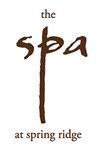Hydration vs. Traditional Facial: What’s the Difference?
Posted in Facials
Facials aren’t just about pampering yourself anymore. They’ve become an essential part of skincare, especially when you’re dealing with dryness, sensitivity, or lack of glow. If you’re torn between a hydration facial treatment and a traditional facial treatment, you’re not alone. Both offer amazing perks, but they work in different ways. Let’s break it all down so you can choose the right one for your skin.
What Is a Hydration Facial Treatment?
A hydration facial treatment focuses on restoring moisture to your skin. It’s designed for people who feel tightness, flakiness, or dullness due to dry or dehydrated skin. This treatment often uses hydrating serums, gentle exfoliants, and calming products that nourish your skin barrier without causing irritation.
It’s especially loved in colder months or by anyone dealing with climate-related dryness, sensitive skin, or aging concerns.
Related Blog: The Importance of Hydration in Body Treatments
What Is a Traditional Facial Treatment?
A traditional facial treatment is more of a general, all-in-one approach to skin health. It usually involves cleansing, steaming, exfoliating, and extracting impurities from the pores. There’s also a mask and massage involved. The products used in traditional facials may target different concerns like acne, oiliness, or uneven skin tone.
This type of facial is more customizable, but it can sometimes be too stimulating for very dry or sensitive skin.
Key Differences Between the Two
While both aim to refresh your skin, their goals and techniques are quite different.
Focus Areas
- Hydration Facial: Moisture retention, calming, and repairing the skin barrier.
- Traditional Facial: Deep cleansing, detoxifying, and treating general skin concerns.
Product Selection
- Hydrating facial treatments use ingredients like hyaluronic acid, aloe vera, and ceramides to lock in moisture.
- Traditional facials often include stronger exfoliants or acne-fighting ingredients like salicylic acid or glycolic acid.
Sensation During Treatment
Hydrating facials feel cooling and soothing. There’s less scrubbing and minimal to no extraction. Traditional facials can feel more intense, especially during extractions and exfoliation.
Aftereffects
Hydrating facials leave the skin plump and dewy. They’re gentle enough for anyone, even people with sensitive or aging skin. Traditional facials might leave you a little red, especially if extractions were involved, but they also give a deep-cleaned, polished look once your skin settles down.
Hydration Facial Benefits
Let’s take a closer look at what makes this treatment such a skin-saver:
- Immediate glow: Your skin looks healthier and more radiant right after the session.
- Plumper skin: Moisture helps smooth out fine lines and adds volume to dehydrated areas.
- Great for sensitive skin: No harsh chemicals or aggressive techniques.
- Long-term hydration: It strengthens the skin barrier, helping it retain moisture better over time.
- Fewer breakouts: Balanced moisture levels reduce irritation and flakiness, which can lead to clogged pores.
It’s hands down the best facial for dry skin, and one of the top picks for calming stressed-out skin.
Related Blog: The Ultimate Guide to Choosing the Right Facial for Your Skin Type
When Should You Choose a Traditional Facial?
Traditional facials are better suited for oily, congested, or acne-prone skin. They help manage breakouts, unclog pores, and improve overall texture. If you’re looking for a “reset” for your skin, a traditional facial is the way to go.
But keep in mind, if your skin is very dry or easily irritated, some parts of the process (like extractions) may feel uncomfortable.
What About a Moisturizing Facial Treatment?
Sometimes, the line between a moisturizing facial treatment and a hydrating one gets a little blurry. Moisturizing treatments focus on sealing in water using emollients and occlusives. Hydrating treatments go a step further by actually increasing water content in the skin through humectants like hyaluronic acid.
Both are helpful, but if you’re feeling parched or flakey, you’ll want the deep hydration.
Can You Combine the Two?
Yes, you can. Some people start with a traditional facial treatment to clean out the pores, then follow up with a hydrating facial for sensitive skin a week or two later to rebuild moisture. However, doing both on the same day may overwhelm your skin unless your aesthetician recommends it.
How to Pick What’s Right for You
Ask yourself these questions:
- Is my skin dry or dehydrated? Go with hydration.
- Do I break out a lot? Try a traditional facial.
- Am I prepping for a big event? Hydration facials give that immediate glow.
- Do I want a deeper cleanse? Traditional facials can go below the surface.
Also, chat with your skincare provider. At The Spa at Spring Ridge, the team will help you figure out the best fit based on your skin type, lifestyle, and goals.
Final Thoughts
Choosing between a hydration and a traditional facial doesn’t have to be confusing. It’s all about knowing what your skin needs at the moment. If your face feels tight, looks dull, or gets flaky, a hydration facial treatment can work wonders. If you need a full reset with extractions and exfoliation, a traditional facial treatment might be just what you need.
Whatever you go with, one thing’s for sure: regular facials can keep your skin looking fresh, healthy, and ready for anything.
Frequently Asked Questions
Q1: Which is better, HydraFacial or Normal facial?
It depends on your skin goals. HydraFacials combine cleansing, exfoliation, extraction, and hydration in one go, making them ideal for a deep refresh without irritation. Normal (traditional) facials can be customized but might be too harsh for sensitive skin. If hydration and glow are your top priorities, HydraFacial is often the better pick.
Q2: Is a hydrating facial the same as a HydraFacial?
Not exactly. A hydrating facial focuses purely on moisturizing the skin using serums and soothing products. A HydraFacial goes further by combining exfoliation, suction-based pore cleansing, and serum infusion. Both boost hydration but in different ways.
Q3: What is the most effective type of facial?
The most effective facial depends on your skin type and concerns. For dry or sensitive skin, a hydration facial works best. If you want a complete skin refresh with exfoliation and deep pore cleansing, a HydraFacial or traditional facial may be more effective.
Q4: What is included in a hydration facial?
A hydration facial typically includes gentle cleansing, light exfoliation, moisturizing masks or serums rich in humectants, and calming massage. The focus is on locking in moisture and boosting the skin’s barrier without irritation.
Q5: What does a hydrated face look like?
Hydrated skin looks plump, dewy, and smooth. It feels soft to the touch and has a healthy glow. Fine lines appear softer, and the skin tone looks more even.
Q6: How long does a hydration facial last?
Results can last about a week or more, depending on your skincare routine and environment. Staying hydrated, using gentle products, and avoiding harsh exfoliants will help you maintain the glow longer.



